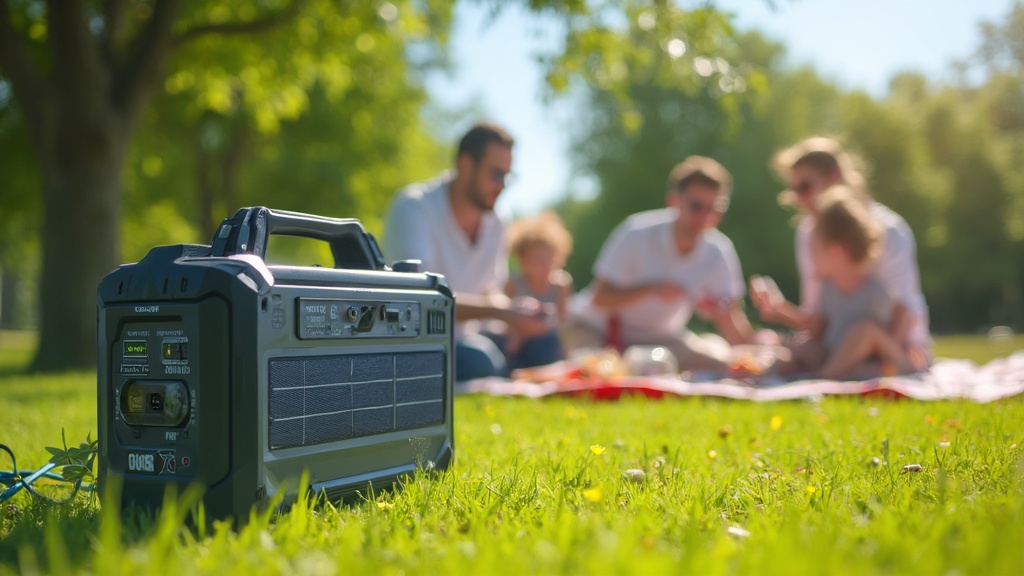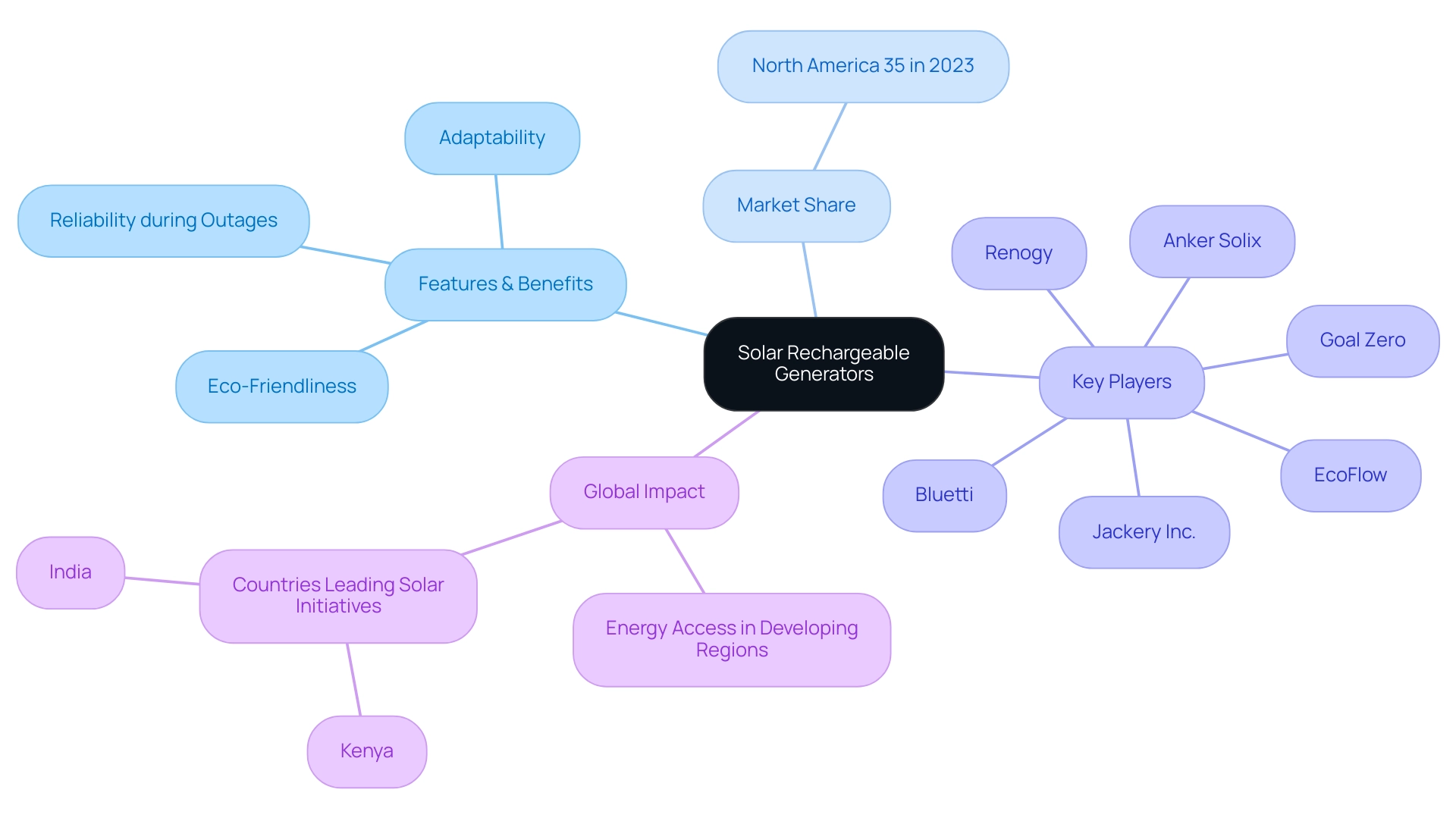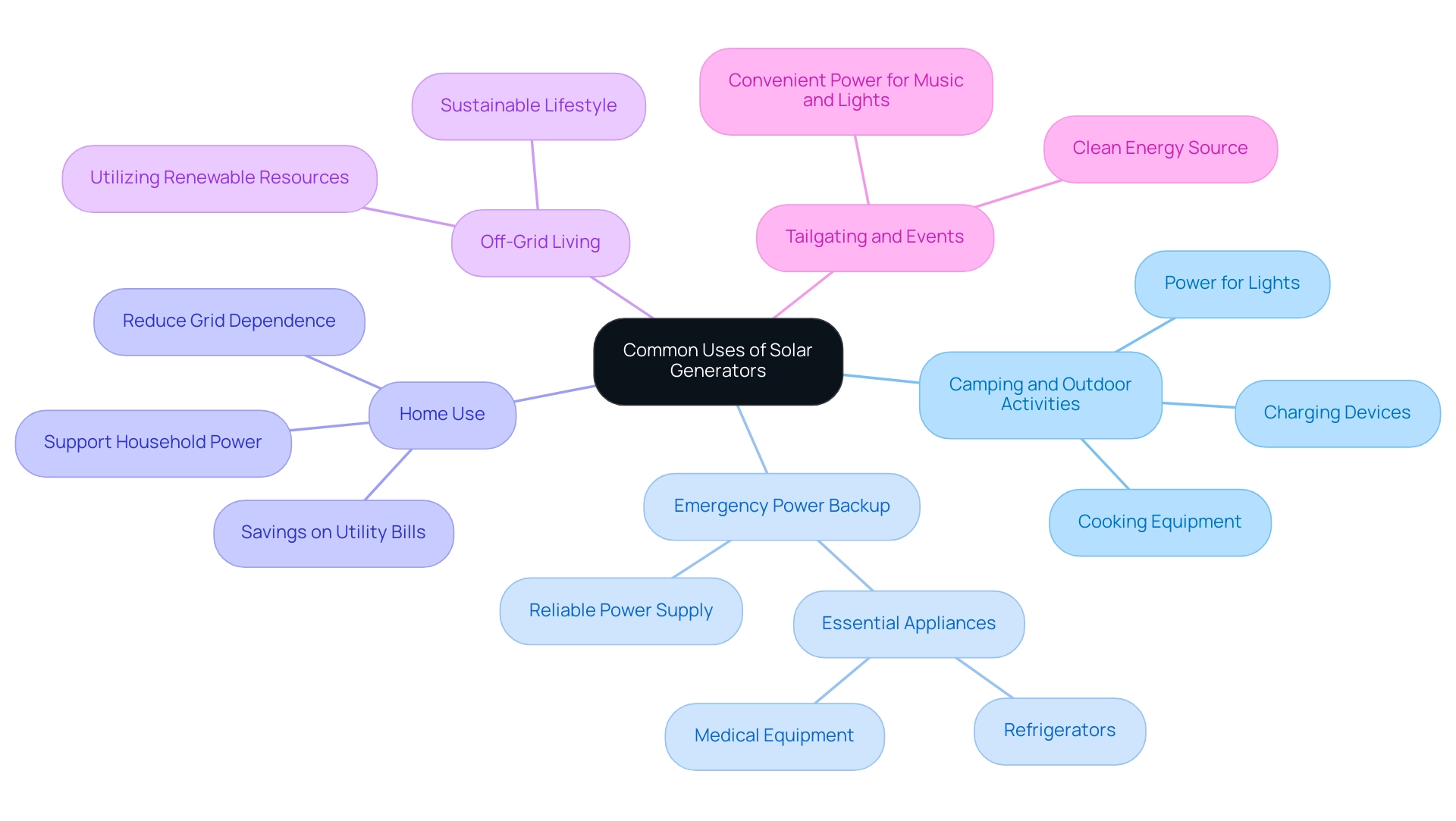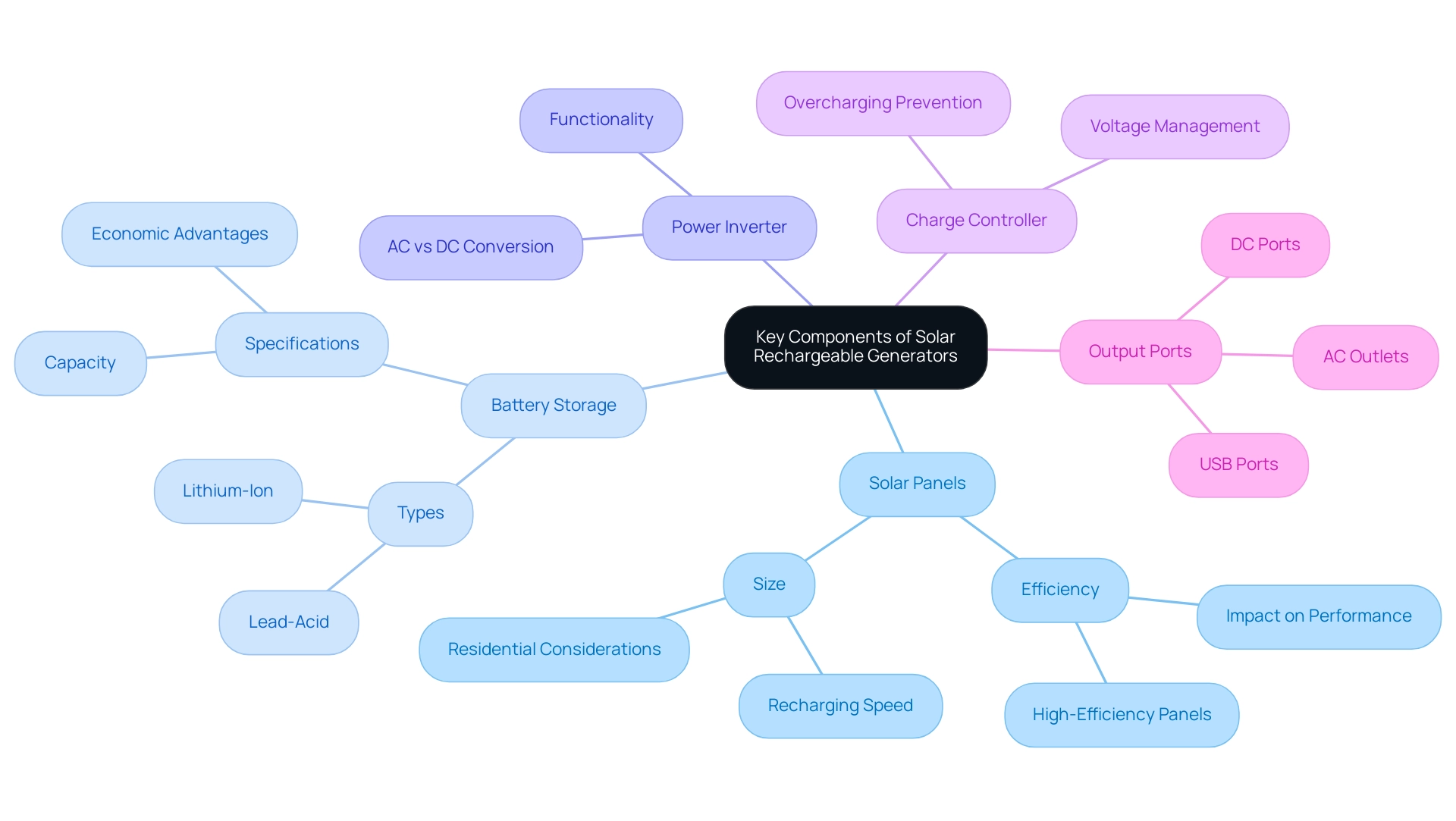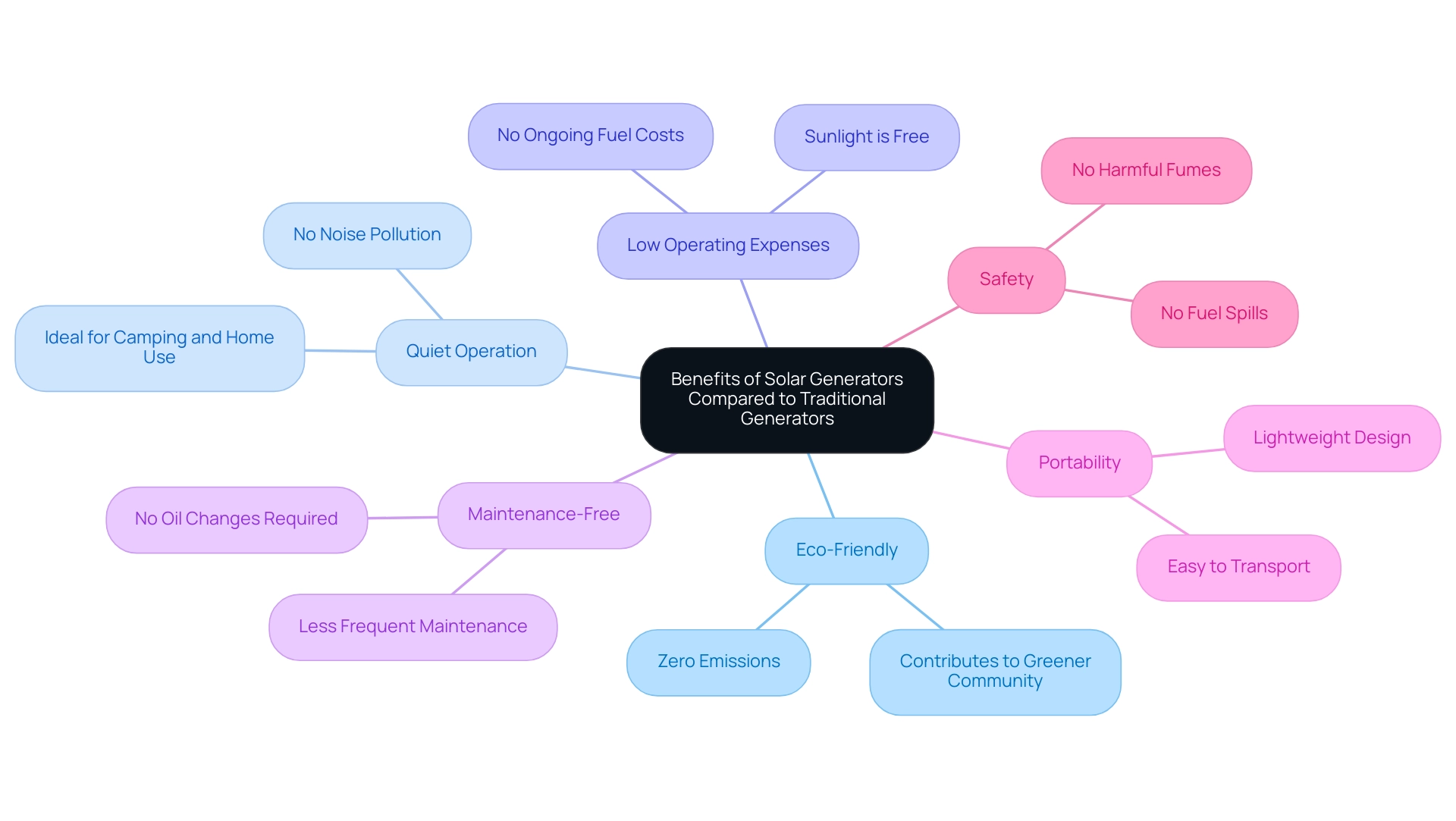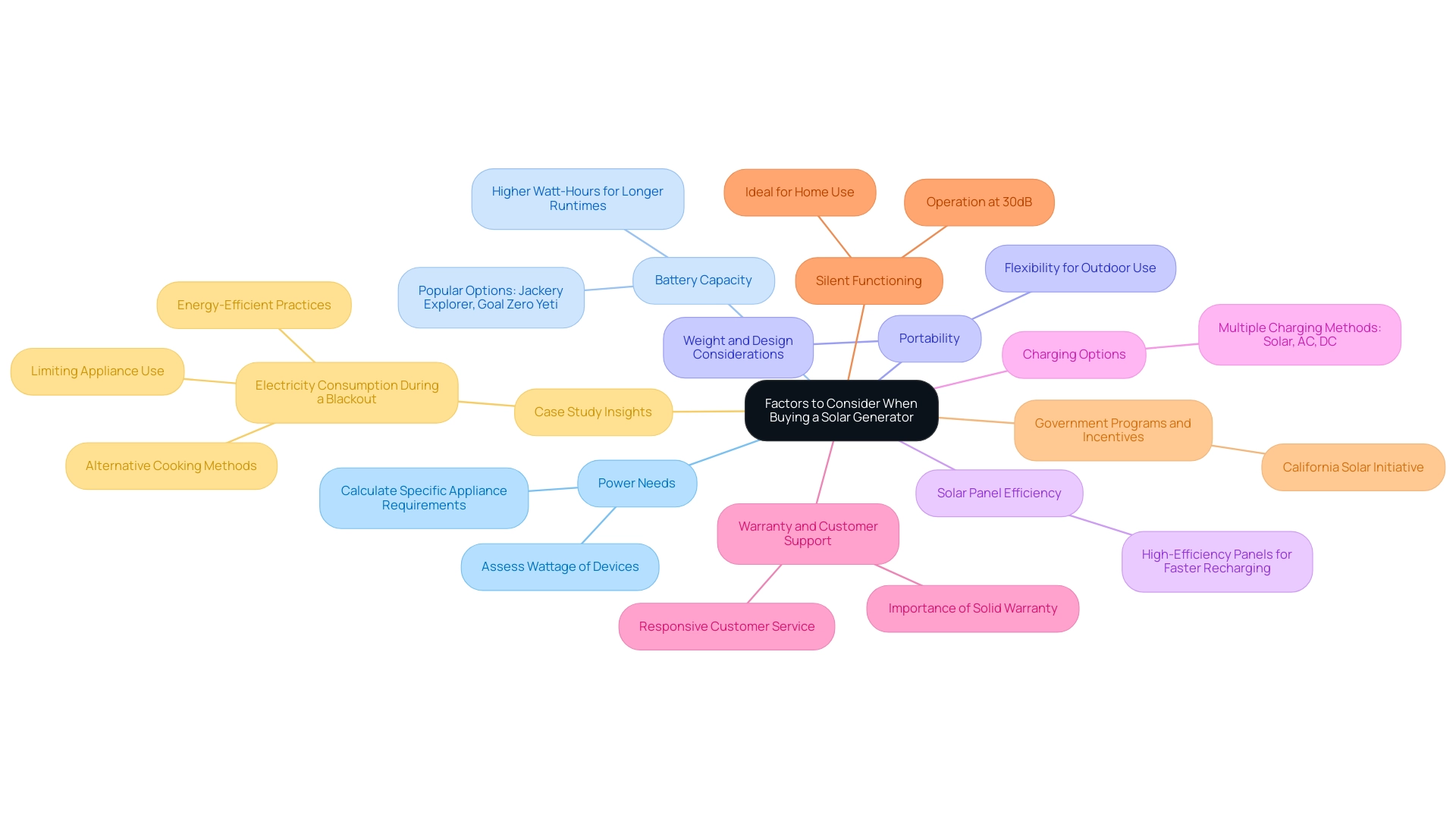Introduction
As the world increasingly turns its attention to sustainable energy solutions, solar rechargeable generators have emerged as a game-changer for eco-conscious homeowners. These innovative systems capture sunlight and convert it into usable power, offering a clean and efficient alternative to traditional fossil fuel generators. With their versatility, they cater to a variety of needs—from outdoor adventures and tailgating to providing backup power during outages.
As the market continues to grow and evolve, understanding the components, benefits, and considerations surrounding solar generators becomes essential for anyone looking to embrace a greener lifestyle. Dive into the world of solar energy and discover how these generators can transform the way power is accessed and utilized, all while contributing to a healthier planet.
What Are Solar Rechargeable Generators?
Solar rechargeable generators are outstanding portable systems that utilize photovoltaic (PV) panels to capture sunlight. These systems, such as the solar rechargeable generator, retain electricity in integrated batteries, enabling you to operate your devices and appliances without depending on traditional fossil fuels, making them an environmentally friendly choice for everything from outdoor excursions to emergency backup electricity and off-grid living. In fact, North America led the global market with a whopping 35% share in 2023, showcasing the rising popularity of these solutions among eco-conscious homeowners.
The significance of photovoltaic battery backups cannot be exaggerated—they offer dependable power during blackouts and unfavorable weather conditions, guaranteeing your home stays powered when it is most crucial. For example, lithium-ion batteries such as the Tesla Powerwall and the LG Chem Resu are among the top battery options available, recognized for their efficiency, longevity, and capacity to store substantial amounts of energy. These devices are not only easy to use with minimal setup but also adaptable, providing charging options through photovoltaic panels, wall outlets, or even your vehicle’s charger.
Key players in the energy-producing market include firms such as Jackery Inc., Goal Zero, and Renogy, which emphasizes the competitive nature of the industry. Whether you’re camping, preparing for a storm, or looking to lessen your carbon footprint, a solar rechargeable generator provides a dependable and eco-friendly alternative to conventional power sources. Additionally, they play a crucial role in expanding power access in developing regions, where nearly 770 million individuals lack electricity, particularly in Sub-Saharan Africa and rural Asia.
Nations such as Kenya and India are at the forefront of solar initiatives, showcasing how these devices can enhance energy accessibility while aligning with the principles of environmentally aware homeowners.
Common Uses and Applications of Solar Generators
Solar power devices, such as solar rechargeable generators, are incredibly versatile and ideal for various uses, making them a great addition for any eco-conscious homeowner. Here are some common ways they can be utilized:
- Camping and Outdoor Activities: Imagine enjoying the great outdoors while having the power for lights, cooking equipment, and charging devices. Solar rechargeable generators ensure that your adventures are enjoyable and connected, even in the most isolated places.
- Emergency Power Backup: When the unforeseen occurs, a solar rechargeable generator can provide lifesaving power supplies. During electrical outages, they can keep essential appliances operating—consider refrigerators to preserve food and medical equipment that requires continuous energy. Their ability to provide a reliable backup with a solar rechargeable generator makes them indispensable.
- Home use of a solar rechargeable generator can effectively support your household power requirements. Employing them during high demand periods not only decreases dependence on the grid but may also result in savings on utility bills. They offer a practical solution for those looking to make their homes more energy-efficient by using a solar rechargeable generator.
- Off-Grid Living: For individuals residing in isolated regions, using a solar rechargeable generator enables a sustainable lifestyle without conventional energy sources. They enable homeowners to utilize renewable resources, fostering both independence and environmental responsibility.
- Tailgating and Events: Planning a tailgate party or an outdoor event? Solar rechargeable generators provide a clean and convenient energy source for music, lights, and cooking appliances, all without the noise or fumes linked to gas-powered systems. This means you can enjoy your gathering while being mindful of the environment.
The increasing enthusiasm for photovoltaic systems, particularly solar rechargeable generators, indicates a transition towards sustainable energy options, with the market anticipated to grow at a compound annual growth rate (CAGR) of 6.54% from 2024 to 2032. Companies like Jackery and Maxoak are leading the charge by introducing innovative models, such as solar rechargeable generators, tailored for both outdoor enthusiasts and emergency preparedness. Additionally, Long Beach renters can take advantage of government programs such as the California Solar Initiative, which offers incentives for renewable energy installations, and the Property Assessed Clean Energy (PACE) program, which allows for financing options that can make renewable energy more accessible.
Pricing for photovoltaic power sources varies significantly, with models beginning at approximately $200 for smaller units and reaching $2,000 or higher for high-capacity systems, making it crucial for renters to evaluate their specific needs and budget. As highlighted in a recent market report from one of the largest companies in the defense industry, “Thank you for sending the market report and data. It looks quite comprehensive and the data is exactly what I was looking for.
I appreciate the timeliness and responsiveness of you and your team.” This commitment to quality and customer satisfaction positions them competitively in meeting the rising demand for portable energy solutions, particularly with their solar rechargeable generator, as demonstrated in case studies focusing on their innovative designs and high-capacity products tailored for outdoor and emergency use.
Key Components of Solar Rechargeable Generators
When it comes to rechargeable power sources, understanding the main components of a solar rechargeable generator can help you make the best choice for your needs. Here’s a friendly rundown of what you should know:
-
Solar Panels: These are the stars of the show, collecting sunlight and turning it into electricity.
While many folks get caught up in panel efficiency, it’s worth noting that efficiency may not always mean a significant performance boost in every situation. In fact, with the global manufacturing capacity of photovoltaic systems projected to reach nearly 1,000 GW in 2024, the significance of panel efficiency can vary. The size of the panels also plays a crucial role in how quickly your generator recharges, especially in a residential setting.
-
Battery Storage: This is where the magic happens—storing the electricity generated by the solar panels for use later on. The battery’s capacity directly impacts how long you can power your devices, so it’s essential to pick one that suits your lifestyle. Key considerations include the types of batteries available, their specifications, and the economic advantages they provide for your independence.
For instance, lithium-ion batteries may offer higher efficiency and longevity compared to lead-acid options, making them a worthwhile investment.
-
Power Inverter: Think of this as the translator for your energy. It converts the stored DC (direct current) electricity from the batteries into AC (alternating current) electricity, which is what most of your household appliances rely on.
-
Charge Controller: This useful device manages the voltage and current coming from the photovoltaic panels to the batteries. It prevents overcharging, which can extend the life of your batteries—a little protection goes a long way!
-
Output Ports: These are the connection points that allow you to plug in your devices.
Expect to find standard AC outlets, USB ports for charging your electronics, and DC ports for car adapters, providing you versatile options to power up whatever you need.
Additionally, research indicates that while around 90% of panels are made from silicon, the introduction of perovskite materials may enhance existing module designs. The combination of perovskite and silicon photovoltaic cells has achieved an efficiency of 25.2%, showcasing real-world advancements in energy technology. With these innovations in battery storage and solar technology constantly evolving, there’s never been a better time for eco-conscious homeowners, especially Long Beach renters, to explore solar options for their homes, considering both the environmental impact and the potential economic savings.
Benefits of Solar Generators Compared to Traditional Generators
Solar generators stand out as a superior alternative to traditional gas-powered generators for several compelling reasons, especially for eco-conscious homeowners in Long Beach looking to embrace sustainable energy solutions:
- Eco-Friendly: Solar power systems produce zero emissions, making them a sustainable choice that contributes positively to our planet’s health. By choosing renewable energy, like a solar rechargeable generator, you’re not just powering your home; you’re also contributing to fostering a greener community. Many photovoltaic power systems, such as a solar rechargeable generator, come equipped with a 200AH battery, providing ample capacity for various energy needs, which is perfect for renters who want to reduce their carbon footprint.
- Quiet Operation: One of the standout features of sunlight-powered devices is their silent functioning. Whether you’re camping in the great outdoors or enjoying a peaceful evening at home, these devices won’t disrupt the serenity, allowing you to enjoy your surroundings without the noise pollution associated with gas-powered models.
- Low Operating Expenses: Following the initial investment, photovoltaic systems have remarkably low operating expenses—sunlight is free! This makes them a financially savvy choice, especially when contrasted with conventional gas-powered devices that incur ongoing fuel costs, which can accumulate substantially over time.
- Maintenance-Free: Say goodbye to frequent maintenance! In contrast to gas-powered systems, which need frequent oil changes and maintenance, electricity-producing units are made for ease, enabling you to concentrate on enjoying your energy source without the burden of ongoing attention.
- Portability: Many renewable energy systems are lightweight and easily transportable, making them ideal companions for outdoor adventures or emergency situations. Their design ensures that you can take your solar rechargeable generator with you anywhere you go, accommodating the needs of renters who may relocate often.
- Safety: With photovoltaic power sources, safety is a priority. There’s no fuel to spill or store, and they don’t emit harmful fumes, reducing the risks commonly associated with conventional power sources. This feature makes them a much safer choice for families and individuals alike.
However, it’s important to consider the potential drawbacks of a solar rechargeable generator. As discussed in the case study titled “Cons of Solar Generator,” there are high initial costs and efficiency that can depend on weather conditions. As noted by WHC Generators, ‘the efficiency of a solar rechargeable generator is dependent on weather and the availability of sunlight.’
Additionally, Long Beach renters should explore government incentives and programs designed to support the adoption of renewable energy technology, which can help offset initial costs. For instance, programs may offer rebates for purchasing energy equipment or tax credits for installation. Moreover, incorporating solutions such as Tesla home chargers can improve efficiency and sustainability for electric vehicle owners.
In summary, photovoltaic systems, such as solar rechargeable generators, not only offer practical benefits but also resonate with the principles of environmentally aware homeowners. As we continue to seek out sustainable energy solutions, adopting photovoltaic technology is a step toward a cleaner, greener future, making it an excellent choice for Long Beach renters eager to access eco-friendly energy solutions.
Factors to Consider When Buying a Solar Generator
When you’re on the journey to find the ideal solar power system, especially as an eco-conscious homeowner in Long Beach, it’s essential to keep a few important factors in mind:
- Power Needs: Start by assessing the wattage of the devices you want to power. It’s crucial to select a device that meets or exceeds these requirements, ensuring that your essential appliances function smoothly. Instead of relying solely on average consumption, calculate the specific electricity requirements of your essential appliances to make a more informed decision.
- Battery Capacity: Look for devices boasting higher battery capacity, measured in watt-hours. This feature translates to longer runtimes, ensuring you won’t be left in the dark during prolonged outages. Popular options include the Jackery Explorer series and the Goal Zero Yeti.
- Portability: If you plan to take your power source on the go—whether for camping trips or outdoor events—consider its weight and design. A portable generator will offer you the flexibility you need.
- Solar Panel Efficiency: Opt for models with high-efficiency solar panels. These panels capture more sunlight, which leads to faster recharging times and greater power at your disposal.
- Charging Options: Versatility is key. Ensure that your device can be charged through multiple methods—solar, AC, and DC—so you have the flexibility to recharge whenever and wherever needed.
- Warranty and Customer Support: Don’t overlook the importance of warranties and customer support. A solid warranty and responsive customer service provide peace of mind, knowing that help is just a call away should any issues arise.
- Silent Functioning: Reflect on the silent functioning of photovoltaic systems, which can run at a top-tier 30dB, making them perfect for home use without disrupting your tranquility.
Furthermore, consider investigating government programs and incentives for renewable solutions accessible in California, such as the California Solar Initiative, which can greatly lower your initial expenses.
The case study titled ‘Electricity Consumption During a Blackout’ provides useful strategies for handling your electricity requirements during outages. By implementing energy-efficient practices and limiting appliance use, you can effectively conserve power and maximize the utility of your solar rechargeable generator during such times. Keeping these factors in mind will help you make a well-informed choice that suits your energy needs and lifestyle, paving the way for a more eco-friendly living situation.
Conclusion
Embracing solar rechargeable generators represents a significant step towards a more sustainable lifestyle, especially for eco-conscious homeowners. These innovative power systems not only harness the sun’s energy but also provide a dependable source of electricity for various applications, from camping and outdoor activities to emergency backup power and off-grid living. With the ability to reduce reliance on fossil fuels and lower energy costs, they stand out as a practical choice for those looking to make a positive impact on the environment.
The versatility of solar generators is complemented by their eco-friendly nature, quiet operation, and low maintenance requirements, making them an attractive alternative to traditional gas-powered generators. As more people recognize the benefits of solar technology, the market is set to grow, driven by advancements in battery storage and solar panel efficiency. For homeowners in regions like Long Beach, exploring government incentives can further ease the transition to solar energy, making it an accessible and financially feasible option.
Ultimately, investing in a solar rechargeable generator not only enhances energy independence but also contributes to a cleaner, greener future. By carefully considering power needs, battery capacity, and other essential factors, individuals can find the right system that aligns with their lifestyle while fostering a sustainable community. Now is the perfect time to harness the power of the sun and embrace a more environmentally friendly way of living.


